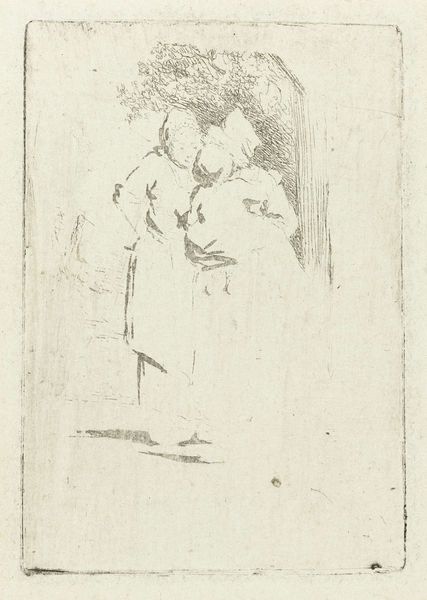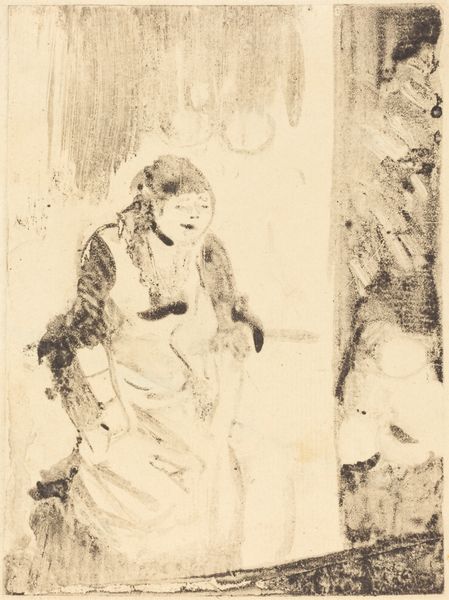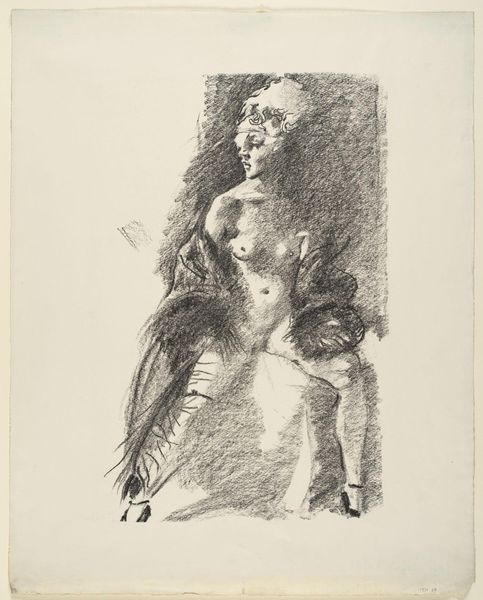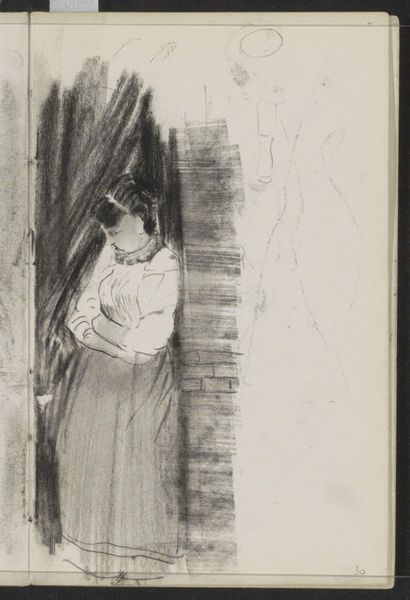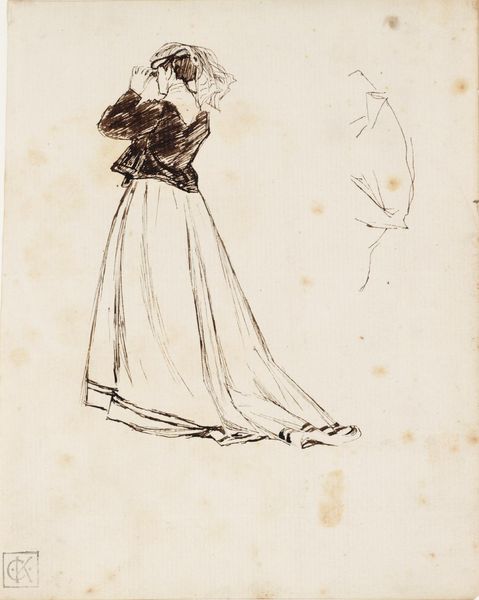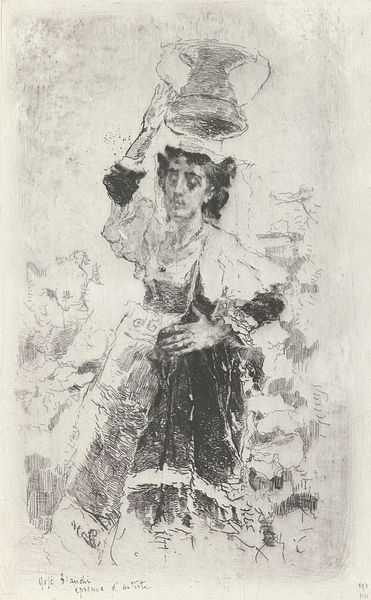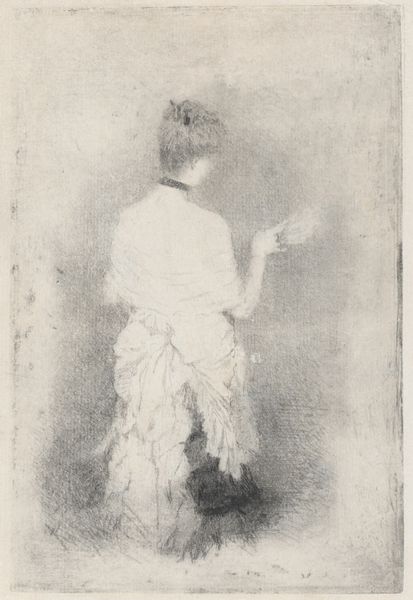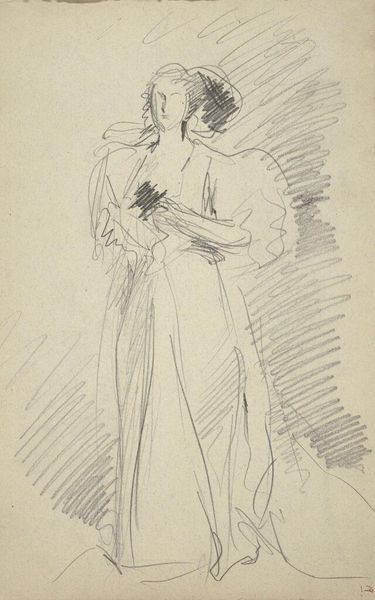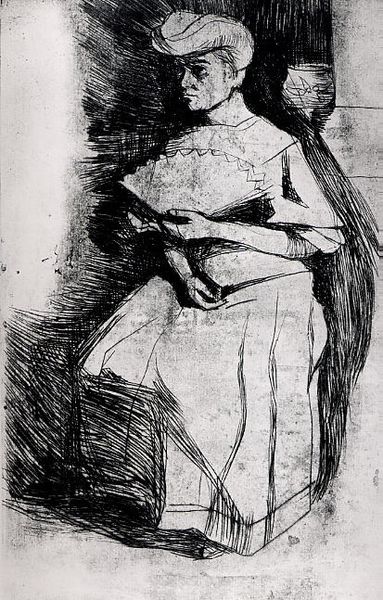
drawing, ink
#
portrait
#
pencil drawn
#
drawing
#
impressionism
#
ink
#
pencil drawing
#
ink drawing experimentation
#
portrait drawing
Copyright: Public Domain: Artvee
This is an evocative watercolor portrait of Rosa Corder by James Abbott McNeill Whistler, who was known for his mastery of the medium. Watercolor is a fascinating material. Its fluidity allows for spontaneity, but it also demands careful control. Whistler here coaxes out the qualities of water, allowing it to pool and bleed, creating soft, blurred edges. He uses the translucency of the paint to build up layers of tone, achieving a subtle depth. The quick, confident strokes of the brush suggest that this was done in one sitting. The economy of means speaks to Whistler's skill, but also to the social context. Watercolor was often favored for portraiture in the 19th century because it was quicker and cheaper than oil paint, making art accessible to a wider range of patrons. By focusing on the material qualities and social context of this artwork, we gain a richer understanding of its meaning, bridging the gap between fine art and the everyday practices of artistic production.
Comments
No comments
Be the first to comment and join the conversation on the ultimate creative platform.
